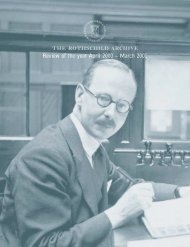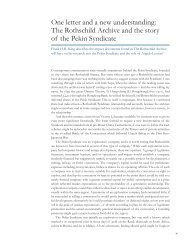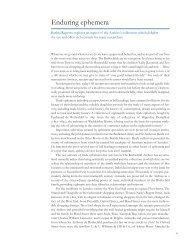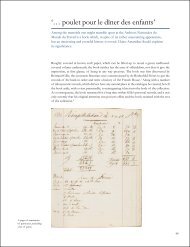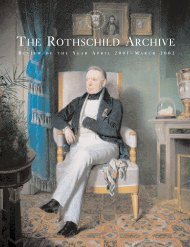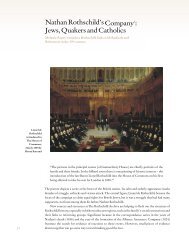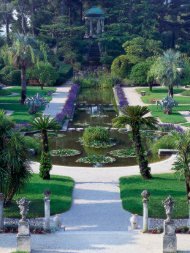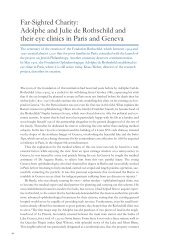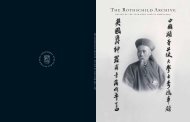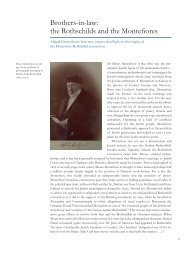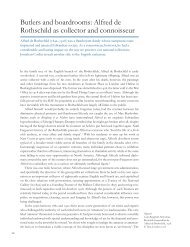66900 Rothschild Archive - The Rothschild Archive.
66900 Rothschild Archive - The Rothschild Archive.
66900 Rothschild Archive - The Rothschild Archive.
Create successful ePaper yourself
Turn your PDF publications into a flip-book with our unique Google optimized e-Paper software.
Below<br />
Views of the gardens<br />
at Ascott, the<br />
Buckinghamshire estate<br />
created by Lionel’s parents,<br />
form the largest group of<br />
images of English gardens<br />
in the collection.<br />
Below right<br />
Lionel combined two of<br />
his passions, horticulture<br />
and photography, to great<br />
effect on his European<br />
tours.<br />
With a passion for the lens and for the new, it was almost inevitable that Lionel would try<br />
his hand with the Autochrome, and so he did, and with considerable success. Indeed, the seven<br />
hundred glass plates which are housed today in <strong>The</strong> <strong>Rothschild</strong> <strong>Archive</strong> represent the largest<br />
single collection of Autochrome plates by an individual British photographer to have survived.<br />
Lionel’s earliest experiments appear to date from 1908 and by 1909 he was bringing back<br />
from his tour of Spain colour plates of Granada and other points en route. At home he began<br />
to take pictures in the gardens of Ascott in Buckinghamshire, the family home designed for<br />
Lionel’s father in the 1880s. Gardens were a favourite subject for the early Autochromists, providing,<br />
in plenty of light, the ideal testing ground both for composition and, above all, for the<br />
subtlety of contrast or complementarity of colour offered as a challenge for the first time by the<br />
Autochrome.<br />
Gardens, which were later to become the central preoccupation of Lionel’s life, would<br />
continue to provide him with inspiration as Autochrome subjects. Occasional close-ups betray<br />
a plantsman’s concern and interest but equally it is clear from a number of other images taken<br />
in the countryside, both in Britain and mainland Europe, that the setting of flowers within a<br />
landscape was naturally pleasing to Lionel’s eye. In all he made some 250 colour plates of<br />
English houses and gardens, by far the largest group of them at Ascott. Lionel never entered<br />
the house with his camera. <strong>The</strong> inordinate length of exposure required for the Autochrome and<br />
the ease with which colours could be upset by poor light or wrong exposure were no doubt<br />
enough of a deterrent for him. And anyway, his interests and pleasure lay outside, whether in<br />
the formality of the topiary gardens or the opulent drifts of spring-flowering bulbs which<br />
Leopold had planted in the surrounding meadows, often providing Lionel with some of his<br />
richest capturings of colour, as tulips or daffodils sprang up and burst into seas of colour<br />
beneath blossoming trees.<br />
17



